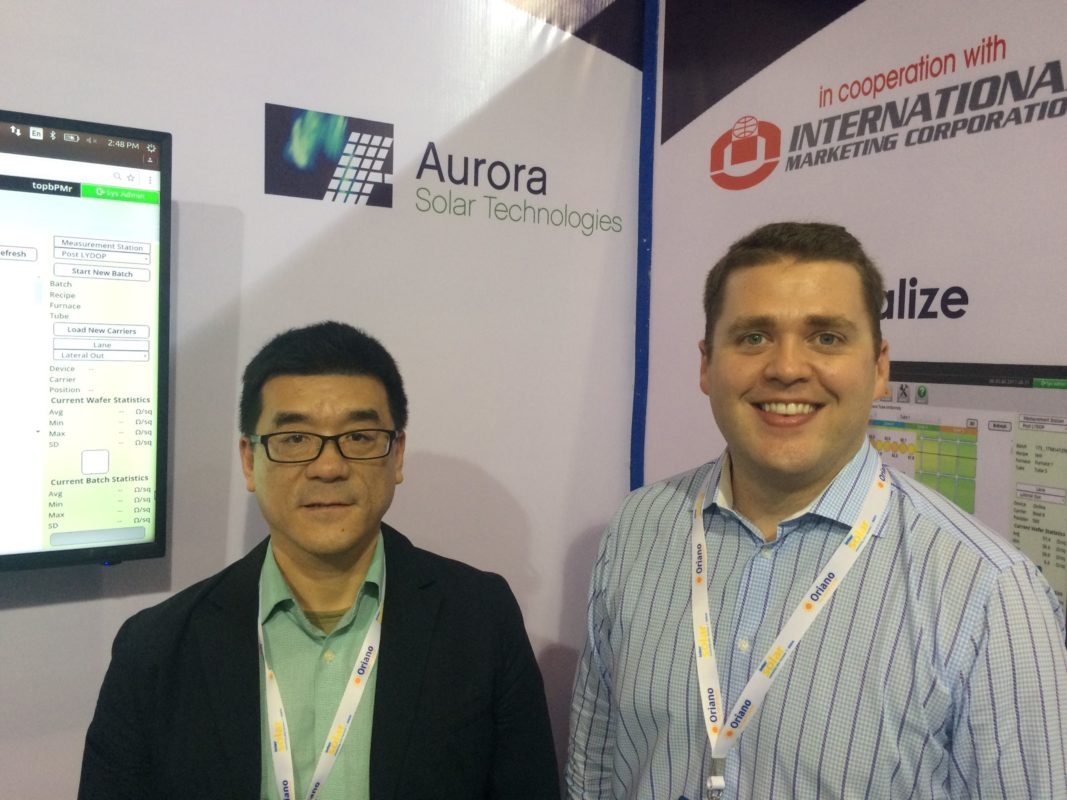
With cell producers increasingly focusing on improved efficienies and yields, line optimization upgrades are coming to the fore. PV Tech caught up with Steve Mcdonald, vice president, application engineering at inline solar cell measurement equipment specialist Aurora Solar Technologies, to discuss some of the industry trends. Aurora founder Gordon Deans will be presenting on cell production quality in a webinar on 6 March.
What are the major challenges for cell manufacturers when it comes to improving yields and getting higher average efficiencies?
Unlock unlimited access for 12 whole months of distinctive global analysis
Photovoltaics International is now included.
- Regular insight and analysis of the industry’s biggest developments
- In-depth interviews with the industry’s leading figures
- Unlimited digital access to the PV Tech Power journal catalogue
- Unlimited digital access to the Photovoltaics International journal catalogue
- Access to more than 1,000 technical papers
- Discounts on Solar Media’s portfolio of events, in-person and virtual
Or continue reading this article for free
The biggest challenge is going to be yield since there can be big distributions of power at the end of the line. That comes mainly from a lack of control of each of the individual process steps. A lot of manufacturing is run open loop. With very small amounts of sampling and limited data, you have a very hard time controlling the process limits for each one of your steps along the line.
If you are able to better control each of the steps along the way, it’s going to narrow the distribution that you have at the end of the line, leading to lower levels of downgraded wafers and ultimately you can actually shift the power higher. As you have narrower limits you can start the process limits closer to their optimum levels without reducing the yield.
Compared to other industries why has the solar industry not adopted inline process tools to maximize fab operations?
One answer is cost. This industry has extremely small margins and is very competitive, so people have not invested in these technologies.
Another answer could be that they haven't had to. There's been a lot of government support and subsidies, so a lot of manufacturers were able to remain profitable, even while maintaining very poor yields and poor qualities at the end of the line.
My personal feeling is that this industry just isn’t mature yet. It ramped up extremely quickly and a lot of people essentially took R&D-scale operations and just multiplied them to make a very large R&D-scale operation, often with little or no closed-loop control, very little feedback, very little inspection, and because of that you end up with a lot of variation at the end of the line.
We’ve done work in China, Taiwan, Malaysia and will soon be going to Singapore. From what I've seen in the different markets, Korea focuses on very high-efficiency designs with tightly controlled processes. Other markets have been slower to adopt high-efficiency designs, but we are seeing an uptick now.
One of our big customers in Korea, one of the early adopters of process tracking and individual wafer tracking, maintains a very tight distribution with over 90% in their top grade bins. They achieve that by monitoring everything, by tracking wafers through the entire facility.
What have been the factors that are now driving cell producers to start improving efficiency and yields?
The economics is a big one. The dollars per watt price changes. It’s not a flat rate. People pay a premium for the high-efficiency products, because there's been an undersupply of them in the market. Thus many producers are seeing that if they make higher efficiency they can charge a higher dollar per watt price.
They can achieve those increases in two ways. Firstly through new technology, going to new processes, n-type material, bifacial, whatever it happens to be. The second option is to try to increase your existing operations by doing better control, better operations, or just increasing the throughput of the lines.
How can cell makers quantify the return on investment for line optimization upgrades?
There are two ways to quantify the benefits of Aurora’s products. One contributor is the elimination of four-point probe sampling. This reduces manual labour and damage caused by manual offline sampling.
The significantly larger contributor is a reduction in variability and the resulting reduction in downgraded cells. This improvement is harder to quantify as it depends on the existing processes, so it is critical to start with an accurate baseline of existing plant output. From there, we implement best practices using the inline measurements and observe the improved end of line performance. The baseline is then compared to the enhanced control scenario so that the increased yield benefits can be accurately quantified.
Gordon Deans, Founder & Chief Operating Officer of Aurora Solar Technologies and Finlay Colville, Head of Market Research at PV Tech Research, will be presenting a Webinar on 6 March titled 'Enhancing quality control in PV Cell production by implementing industry 4.0 design features'.






